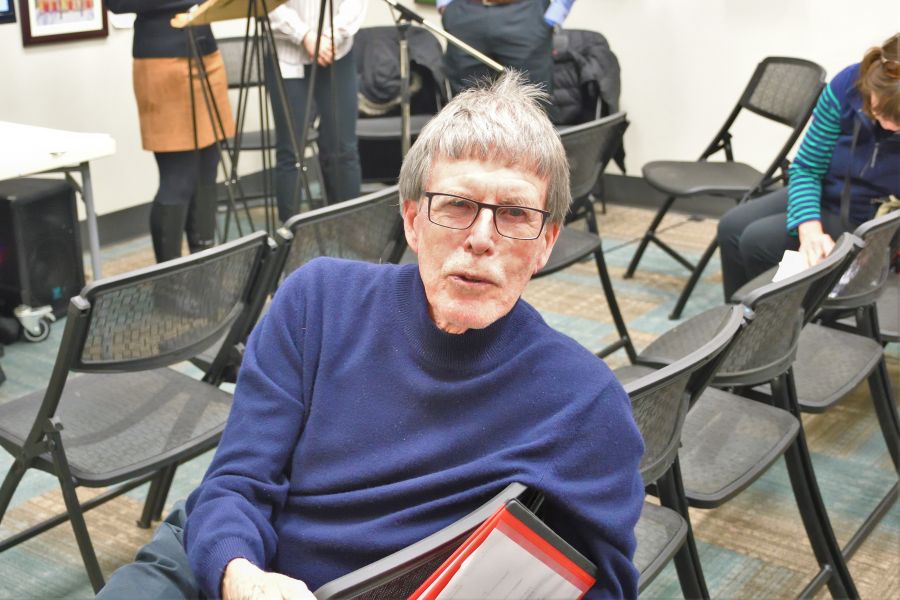Those who know me know I procrastinate, especially when it comes to unpleasant matters – or at least that was my practice until not long ago.
In our age group most of us are only too well aware that things can go wrong in a hurry – perhaps a stroke, heart attack, a newfound serious cancer or a fall with unpleasant consequences, to name a few of many possible unpleasant surprises that might await us.
For that very reason, many friends are well-organized: they’ve put their affairs in order, especially if they’re much past their mid-70s.
Their will, other legal matters, finances, funeral arrangements and most other matters are settled, including for some, writing their own obituaries.
In my defence – which I admit is weak – I can’t recall my parents’ generation taking similar steps, except my father who kept the will up to date.
So, when I went to my first family funeral following my mother’s death, funerals were new to me.
What stands out to this day was the visit my father and I made to a funeral home in Ancaster, Ont. Among our duties was choosing a casket from a room full of them lined up in neat rows with their tops turned back.
The display was accompanied by a running commentary from a staff member from the funeral home about the relative merits and qualities of the woods, furnishings and the “greater comfiness” offered by thick padding in the more expensive caskets to which he kept steering us.
My father and I agreed: Mum would have enjoyed the humour of that moment but not the cost.
These days, funeral practices vary with religion and culture, and like most practices, they have deep evolutionary roots.
For example, early examples of burying the dead in a respectful manner, antedate both Neanderthals and modern humans: Some sites of intentional burials date as far back as 800,000 years ago and homo naledi, a small-brained species with a mix of ape and human like anatomical features, buried their dead carefully 240,000 years age.
Elaborate burial rites, however, appeared much later in the archeological record – about 50,000 years ago.
For example, at Sunghir in what is now Russia, over 20,000 years ago, two children, a girl and boy, were buried head-to-head, together with skilfully fashioned spears and thousands of finely worked ivory beads that probably decorated their clothes when they were buried. Such elaborate practices strongly suggest the children were highly valued.
Some funerary practices were designed to preserve the body and hence the soul of the deceased for eternity. Such was the case in Egypt over a period of almost 3,000 years. Practices varied from site to site and place to place but shared several features.
The lungs, stomach, intestines and brain were removed and the bodies dehydrated using salt preparations and anointed to preserve the body and protect it from bacteria, fungi and prevent the breakdown of the body’s proteins.
Throughout that long period of preparation there would have been religious rituals. When the body was fully prepared, it was wrapped and anointed with various incenses.
No surprise, the more exalted the rank of the deceased, the more elaborate the process and final resting place. The whole preparation for the afterlife took place over several weeks in embalming workshops, several of which existed in Egypt at any one time.
What we know about mummification comes from Egyptian texts including an embalming manual dated to 1450 BC and Greek sources from the fifth and first centuries BC, Egyptian art depicting the process and chemical analysis.
Recently, an international team revisited the subject and discovered 35 jars, some labelled with the contents and subjected them to chemical analyses.
What was obvious was that many of the materials, the oils, resins from trees and other plants and ointments – some from animal fats – came from widely scattered sources around the Mediterranean as well as Africa. That means that trade was well-established to distant places.
Trade is one of those behavioural practices that mark well-evolved and developed human societies, growing social complexity and social stratification.
In 2022, a Nobel Prize was awarded to Svante Pääbo for his pioneering work on ancient DNA.
One of Pääbo’s earliest attempts to salvage DNA was from Egyptian mummies. He failed because the DNA was probably destroyed by the mummification chemicals, and what might have survived, was too contaminated with other DNA, including human DNA from the investigators.
The latter was a hard lesson to learn but being a resilient and determined scientist, his scrupulous efforts to avoid contamination and protecting the source material finally paid off and is now the winning formula for protecting and decoding ancient DNA.
Dr. William Brown is a professor of neurology at McMaster University and co-founder of the InfoHealth series at the Niagara-on-the-Lake Public Library.










